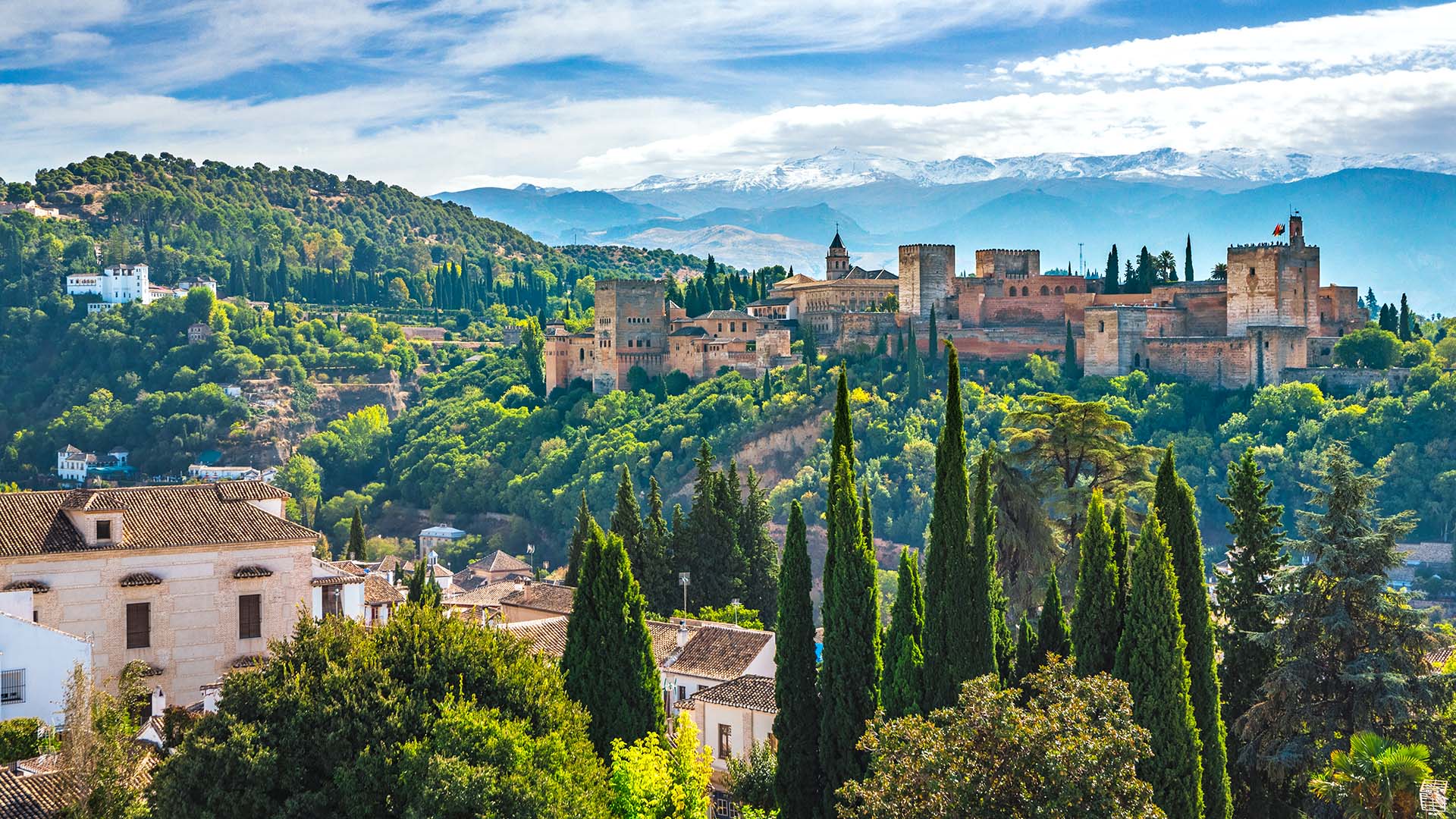Taste the flavors of Southern Spain as you wind your way through the Andalusia region curving coastlines, staggering mountains and lush valleys on a food-focused Spain road trip. The unique geography has greatly influenced the types of foods you’ll find, as well as how they’re prepared.
Dip your toes in the Mediterranean and tuck into a plate of freshly caught seafood along the Costa del Sol, then head into the mountains for plates of velvety smooth serrano ham. You’ll learn to eat like a local on this Spain road trip.
Start: Marbella
Known as the glitzy playground for well-heeled travelers, Marbella lies in the heart of the Costa del Sol. Here you’ll find one of Andalusia’s most delicate culinary gifts, coquinas, tiny clams that are harvested just off the region’s coast. What makes them so revered is a classic case of supply and demand: only certain numbers of them can be brought to shore and they’re often not available.
To get your coquina fix, head to Nuevo Reino, a seafood restaurant Marbella’s San Pedro waterfront that has been a favorite among locals since 1957. Here, you can order a ration, or racion, that’s cooked with butter, white wine, garlic and parsley. As for extra bread to sop up the savory juices and slurp down clams to your heart’s content.
Stop 1: Malaga
Distance from Marbella: 38 miles
Settle into the port city of Malaga, just east of Marbella, taking time to admire its old and new charms: the sprawling hilltop citadels, the Alcazaba and Gibralfaro, which date back to Moorish rule, as well as the sparkling waterfront, dotted with restaurants and an outpost of Centre Pompidou.
While seafood reigns supreme throughout Andalusia, Malaga’s beachfront seafood restaurants, known as chiringuitos, in the Pedregalejo neighborhood dish out some of the freshest — and tastiest — fare.
Start your meal with a mountainous serving of pescaíto frito, a type of fried fish that’s said to have served as inspiration for the United Kingdom’s fish and chips. As a rule of thumb, the pescaíto consists of sole, cod or squid that has been finely chopped, dipped in a delicate batter, fried in Andalusian olive oil, salted and served with a wedge of lemon.
If you’re overwhelmed with choice as you wander Pedregalejo’s promenade, settle into El Caleno, where you’ll reliably find perfectly prepared plates of pescaíto.
Stop 2: Frigiliana
Distance from Malaga: 36.2 miles
Drive further east along the coast until you reach the resort town of Nerja. From here you’ll head north into Andalusia’s craggy mountains and into one of it’s most striking towns, Frigiliana. One of the region’s famed pueblo blancos, or white villages, Frigiliana overlooks rolling, green hills and the dazzling coast in the distance below.
When you’re not busy snapping Instagram-worthy photos, pause to try one of Andalusia’s sweetest treats: miel de caña, a type of honey made from sugarcane, similar to molasses. Tiny Frigiliana is home to the only factory in Europe that makes the miel, Ingenio Ntra. Sra. del Carmen. Pop by the factory or taste the fruits of its labor by ordering berenjenas con miel de caña, a traditional dish of fried eggplant drizzed with the honey.
Stop 3: Seville
Distance from Frigiliana: 160 miles
Other than paella, tapas are the food most closely associate with Spanish dining. These small plates feature regional favorites like pickled anchovies, meatballs in a creamy almond sauce, or shrimp in bubbling, garlicky oil. Typically — when you meander off the tourist trail — tapas are served at tapaterias (tapas bars) as free, small bites when you order drinks at a bar.
Though you’ll find tapas most anywhere, for a more modern and inventive twist on the dishes, head to La Azotea, where you’ll rub elbows with locals and dig into plates like marinated salmon tartare.
After a long night of drinks and tapas, breakfast can become a critical meal. Settle your belly with a plate of huevos a la flamenca, a heaping plate of eggs, chorizo and tomato sauce that’s baked in a clay dish and finished off with extra chorizo slices and asparagus, because, really, why not? Start your morning with some of Seville’s best huevos at Bar La Sacristía.
Stop 4: Jabugo
Distance from Seville: 69.5 miles
Perhaps the most decadent of Andalusian fare is jamón serrano, cured ham that’s sliced into silvery, paper thin slices. Serrano ham can be found throughout Spain, but Andalusia’s dry climate and cooler winters are ideal conditions for curing the ham. For some of the best, head to the village of Jabugo, tucked into the Sierra de Arecena mountains.
The local pigs here feed on acorns from the region’s many oak trees which is said to give their cured meat a particularly buttery consistency and rich flavor. As you wander through the town you’ll see flanks of ham hanging from the ceiling hooks of butcher shops, bars and restaurants. Make a reservation to visit La Bodega Cinco Jotas, which has been producing some of the region’s finest jamón since 1879.




